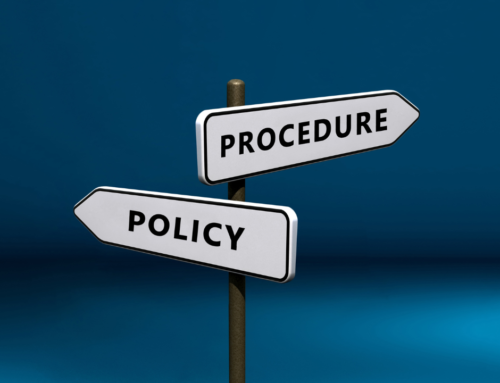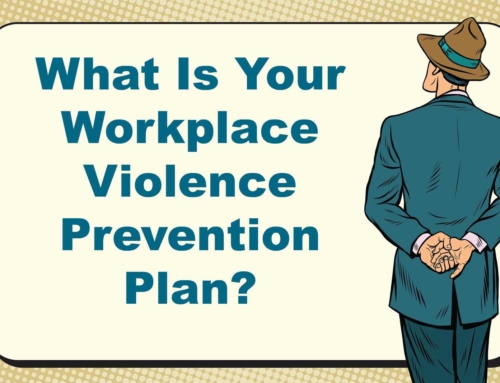Workplace Violence Prevention is a Collaboration
Helen Keller once said:
“Alone we can do so little. Together we can do so much.”
This quote is quite relevant when it comes time for your organization to start creating an effective Workplace Violence Prevention program.
The multidisciplinary approach is considered best practise here—So get other people involved!
Let me elaborate: Due to the complex and multidimensional nature of Workplace Violence, effective prevention and intervention strategies require a multidisciplinary approach involving the active participation of many employees within your organization.
And keep in mind that Workplace Violence does not reside exclusively in the world of security, Human Resources, Management, or Occupational Health and Safety committees – although it impacts each of them greatly.
In fact, effective prevention and intervention efforts will draw on the knowledge, skills, and participation of several stakeholders within the walls of your business.
An organization that truly wants to develop and implement prevention and intervention efforts should begin by considering who within the organization will be responsible for each of the following:
- Developing and implementing the Workplace Violence Prevention Program
- Conducting ongoing risk assessments
- Periodically assessing the effectiveness of the program.
Below I’ll discuss the personnel that your organization should consider involving in this process.
Senior Management
Effective Workplace Violence Prevention efforts require a clear top-down commitment to ensure that:
- The right resources are allocated to develop an effective program
- The management of incidents are properly carried out when or if they occur
- Training, physical security measures, and other items essential to successful prevention efforts are enforced
An organization that chooses to implement effective prevention strategies should obtain the participation of the executive management in accomplishing some, or all, of the following tasks:
- Establishing the Workplace Violence Prevention Program as an organizational priority, and therefore helping to deliver the right message from the top
- Reviewing and approving a Workplace Violence Prevention Policy
- Appointing appropriate people to develop, implement, and monitor the Workplace Violence Prevention Program
- Providing sufficient resources to establish, implement, operate, monitor, and maintain the program; including employee training and education
- Providing sufficient resources as may be required during the management of an incident within the workplace
Personal Note on Senior Management:
There is nothing more satisfying when we are delivering Workplace Violence Prevention training than to have the head of the organization stand at the front of the room before we have begun, and reiterate the importance of the training that is about to be experienced– It sends a massively important message to everyone.
Human Resources
Human Resources personnel commonly play a central role in establishing and implementing an organization’s Violence Prevention Strategy, as they typically have broader responsibilities in the area of employee relations management.
In many organizations, Human Resources will occupy a leadership role in:
- Developing the workplace violence prevention program and relevant policies, procedures, and practices
- Organizing and conducting training
- Participating in the management of incidents
- Enforcing Workplace Violence policies through appropriate corrective, and perhaps disciplinary action, when the responsible person is an employee
Additionally, employees will often direct their concerns or complaints about threats of violence to Human Resources. After receiving such a report, Human Resources will contribute key skills to the management of incidents.
This can include, but is certainly not limited to: escalating the report to appropriate personnel, conducting or assisting with the investigation process, communicating with affected employees, and providing input (i.e. enforcing corrective action or other remedial or preventative measures) while the organization attempts to address and resolve a report.
In workplaces where employees are represented by a union, Human Resources may also become involved in negotiating with labour representatives regarding policies and procedures established under the organization’s Workplace Violence Prevention Program, including measures to be taken following policy breaches.
Personal Note on Human Resources:
In my experience, I have found Human Resource personnel to be highly qualified and experienced. They represent an incredible potent source of help, advice, and counsel in every organization. Involving Human Resources does not necessarily mean that an investigation is required or automatic, but it does ensure that they will be there to provide guidance and offer suggestions when brought into the dialogue. They will also be able to state when a formal response is required.
Security
Workplace Violence Prevention will typically find core support and involvement among security personnel already oriented around issues of workplace safety.
Depending on their training and experience, security personnel can contribute practical expertise on a range of topics related to both prevention and intervention – such as on-site physical security, techniques regarding the management of the incident, coordination with other management practices set in place within the organization, and law enforcement intervention and coordination.
Additionally, as with Human Resources, security personnel will often be the first person contacted about the threat or violent incident, and will assist in providing an appropriate initial response and escalating the incident response as needed.
During an incident, security personnel may become involved in controlling and securing the worksite, and assisting law enforcement first-responders.
Frequently, security personnel will have established a relationship with local police agencies, which can, in turn, help expedite police response to an incident.
Personal Note on Security
Security personnel provide a sense of reassurance within an organization. Their role is to be the eyes ands ears of the organization and to provide that first alert. Involve your security personnel at every stage of the program development – you won’t regret it.
Occupational Health and Safety Personnel
Ideally, Workplace Violence Prevention, intervention, and response should be viewed as an integral part of an organization’s comprehensive occupational injury and illness prevention program.
Like other hazards in the workplace, the risk of violence can be minimized through workplace design, employee training, and workplace policies, procedures, and practices.
To that end, Occupational Health and Safety Personnel play an important role in keeping employers and employees aware of the developments in occupational health and safety legislation, recommended guidelines on violence prevention; and in assisting that the organization maintain and exceed compliance.
Moreover, should an incident occur, Occupational Health and Safety Personnel will often assist the organization in executing required documentation, recordkeeping, and reporting requirements.
Personal Note on Occupational Health and Safety Committees
Since chairing the Occupational Health and Safety Committee at the New Westminster Police Department for several years while I was employed there, I found that each member of the committee wanted to, not only be part of the committee, but was desperate to be actively engaged. With a team of individuals like that, we managed to achieve remarkable progress– Use them within your organization as well. Put them to work. They will thank you for it.
Union Leaders
In organizations where collective bargaining agreements exist, unions are legally empowered to represent the work force, and bargain with employers regarding the terms and conditions of employment. This includes policies, procedures, and employee’s rights that apply during efforts to prevent workplace violence, or in managing the response to an incident.
In the area of Workplace Violence, unions and management should not find themselves in an adversarial relationship (even where disciplinary issues are involved), because the union also has a responsibility to protect its member’s safety.
The obligation to protect other members against a potentially violent individual, can often lead union representatives to align with an employer in order to avoid liability for failing to protect other workers from actual or potential harm.
Personal Note on Union Leaders
Once again, I must share that the union personnel that I have been involved with when dealing with matters of employee safety, err on the side of maintaining a safe workplace, regardless of the relationship that they hold with the employee who has strayed outside the lines. Building relationships ahead of time is always critical though. If the trust is not there beforehand, a more difficult experience may result.
Employee Assistance Programs
Employee Assistance Program personnel may become involved in prevention and intervention efforts in several ways:
- As part of efforts to resolve an incident, an employee who has been found to have engaged in concerning behaviour may be referred to an employee assistance program for counselling, or as part of a remedial or corrective plan
- Employee Assistance Program personnel may be engaged to provide psychological counselling to help employees, or workgroups, affected by a threat or violent incident
- While normally bound by obligations of confidentiality, Employee Assistance Program personnel involved in counselling an employee, may learn of possible threats to other workers, therefore triggering an obligation to warn the employee/s mentioned.
- Employee Assistant Program personnel who have received specialized training in violence risk assessment may be called upon to conduct an initial violence risk screening– Unless prohibited from doing so by obligations of confidentiality or other legal or ethical restrictions
Personal Note on Employee Assistance Programs
An organization must provide the necessary means for the safety and health of its workforce and so, developing a robust Employee Assistance Program is critical. I have seen and experienced firsthand how effective they are– Definitely worth their weight in gold!
Crisis Management Personnel
Crisis Management personnel can play a helpful role in ensuring that the organization’s Workplace Violence Prevention Program includes the means to address and recover from emergency situations caused by a violent incident or threat.
Crisis Management personnel can contribute their expertise in developing a crisis management process that includes a consideration of possible violent incidents or threats, and that is fully integrated into the organization’s broader crisis management plans.
Personal Note on Crisis Management Personnel
This will often be in the form of a specialized consultative group that is able to look at your unique situation objectively, and provide you with expert guidance and advice. It is not about adopting a CYA approach–.it’s about SAFETY in the WORKPLACE.
That’s where we start and that’s where we finish.
By engaging each of the stakeholders that I have mentioned here, you will quickly discover that Helen Keller knew exactly what she was talking about.
Together we can do so much!







Leave A Comment